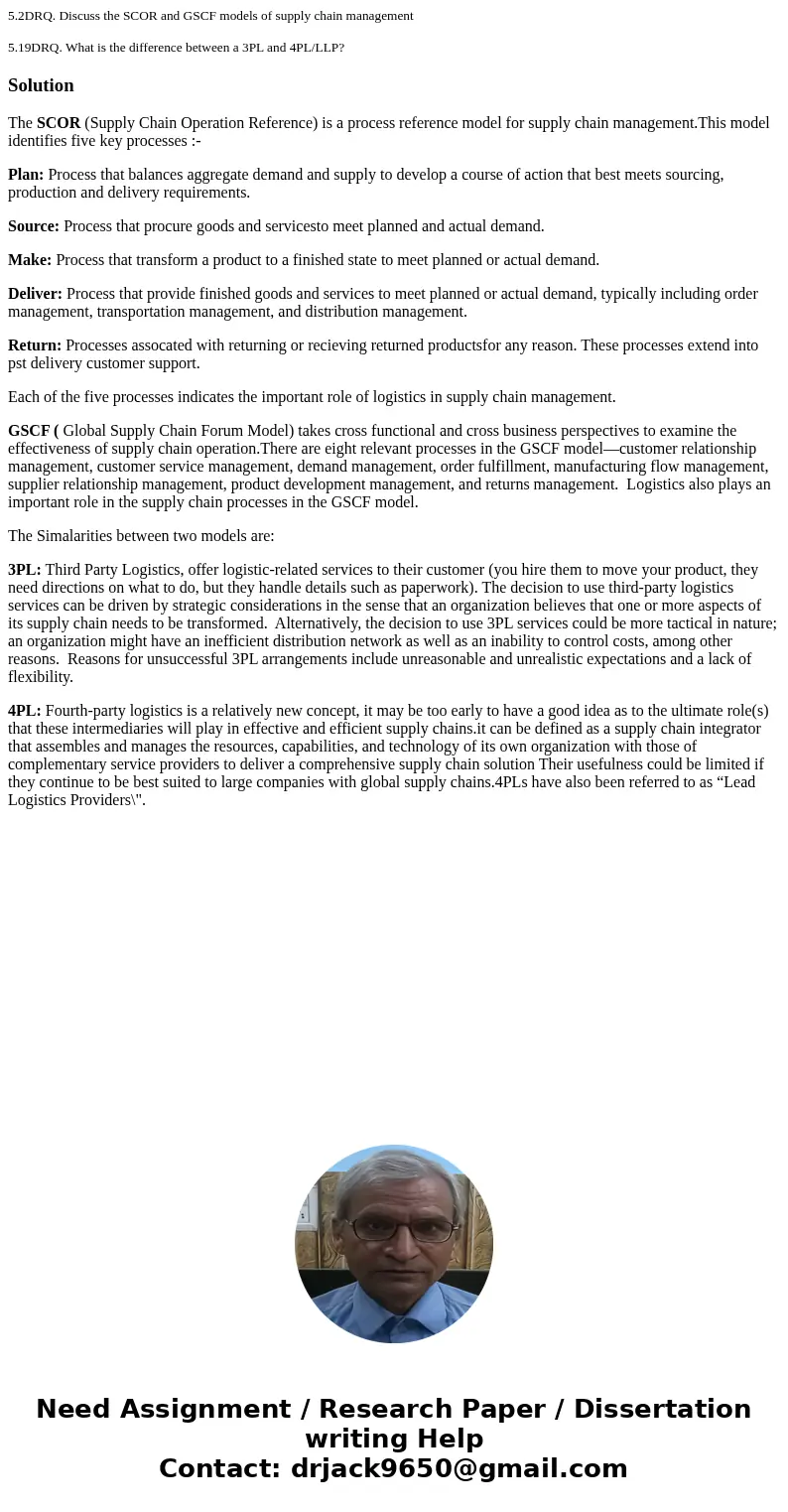52DRQ Discuss the SCOR and GSCF models of supply chain manag
5.2DRQ. Discuss the SCOR and GSCF models of supply chain management
5.19DRQ. What is the difference between a 3PL and 4PL/LLP?
Solution
The SCOR (Supply Chain Operation Reference) is a process reference model for supply chain management.This model identifies five key processes :-
Plan: Process that balances aggregate demand and supply to develop a course of action that best meets sourcing, production and delivery requirements.
Source: Process that procure goods and servicesto meet planned and actual demand.
Make: Process that transform a product to a finished state to meet planned or actual demand.
Deliver: Process that provide finished goods and services to meet planned or actual demand, typically including order management, transportation management, and distribution management.
Return: Processes assocated with returning or recieving returned productsfor any reason. These processes extend into pst delivery customer support.
Each of the five processes indicates the important role of logistics in supply chain management.
GSCF ( Global Supply Chain Forum Model) takes cross functional and cross business perspectives to examine the effectiveness of supply chain operation.There are eight relevant processes in the GSCF model—customer relationship management, customer service management, demand management, order fulfillment, manufacturing flow management, supplier relationship management, product development management, and returns management. Logistics also plays an important role in the supply chain processes in the GSCF model.
The Simalarities between two models are:
3PL: Third Party Logistics, offer logistic-related services to their customer (you hire them to move your product, they need directions on what to do, but they handle details such as paperwork). The decision to use third-party logistics services can be driven by strategic considerations in the sense that an organization believes that one or more aspects of its supply chain needs to be transformed. Alternatively, the decision to use 3PL services could be more tactical in nature; an organization might have an inefficient distribution network as well as an inability to control costs, among other reasons. Reasons for unsuccessful 3PL arrangements include unreasonable and unrealistic expectations and a lack of flexibility.
4PL: Fourth-party logistics is a relatively new concept, it may be too early to have a good idea as to the ultimate role(s) that these intermediaries will play in effective and efficient supply chains.it can be defined as a supply chain integrator that assembles and manages the resources, capabilities, and technology of its own organization with those of complementary service providers to deliver a comprehensive supply chain solution Their usefulness could be limited if they continue to be best suited to large companies with global supply chains.4PLs have also been referred to as “Lead Logistics Providers\".

 Homework Sourse
Homework Sourse